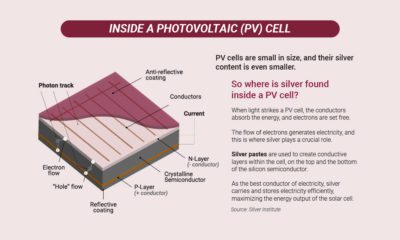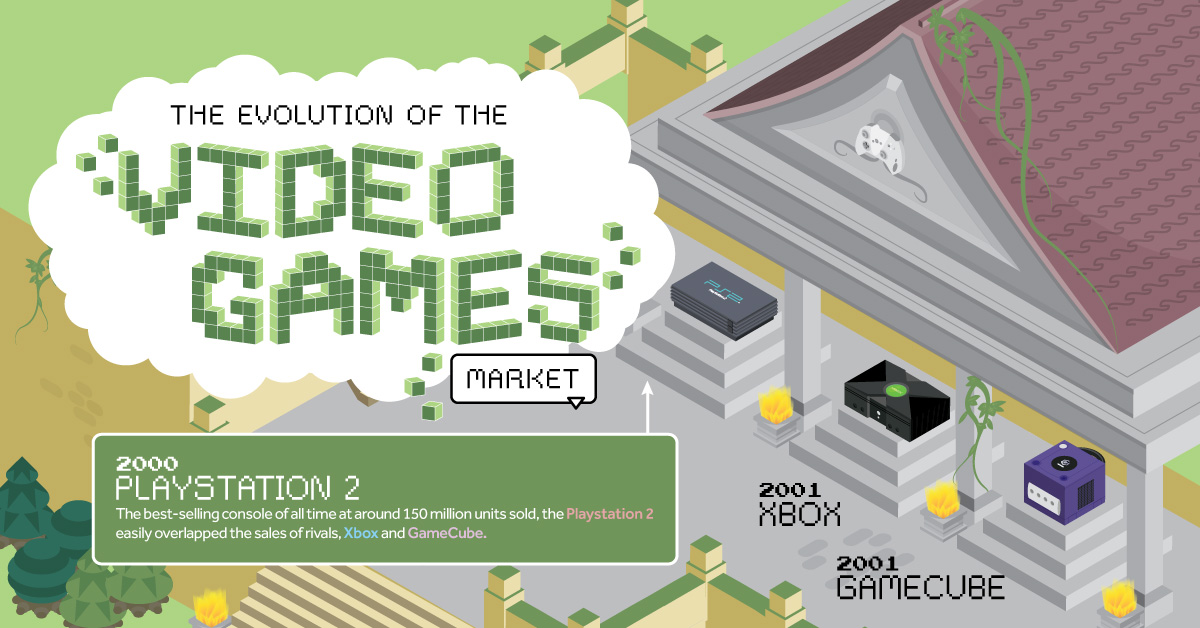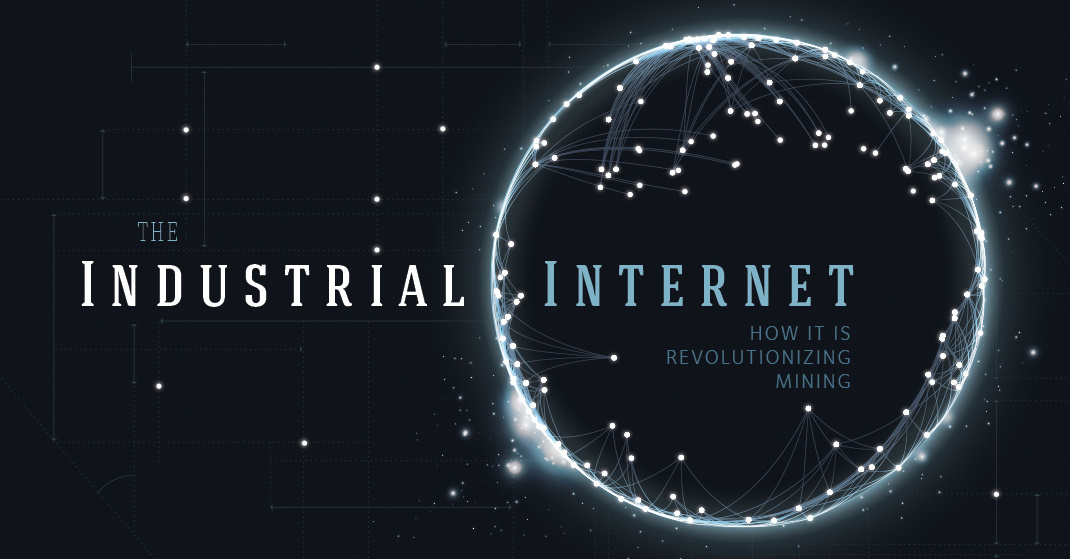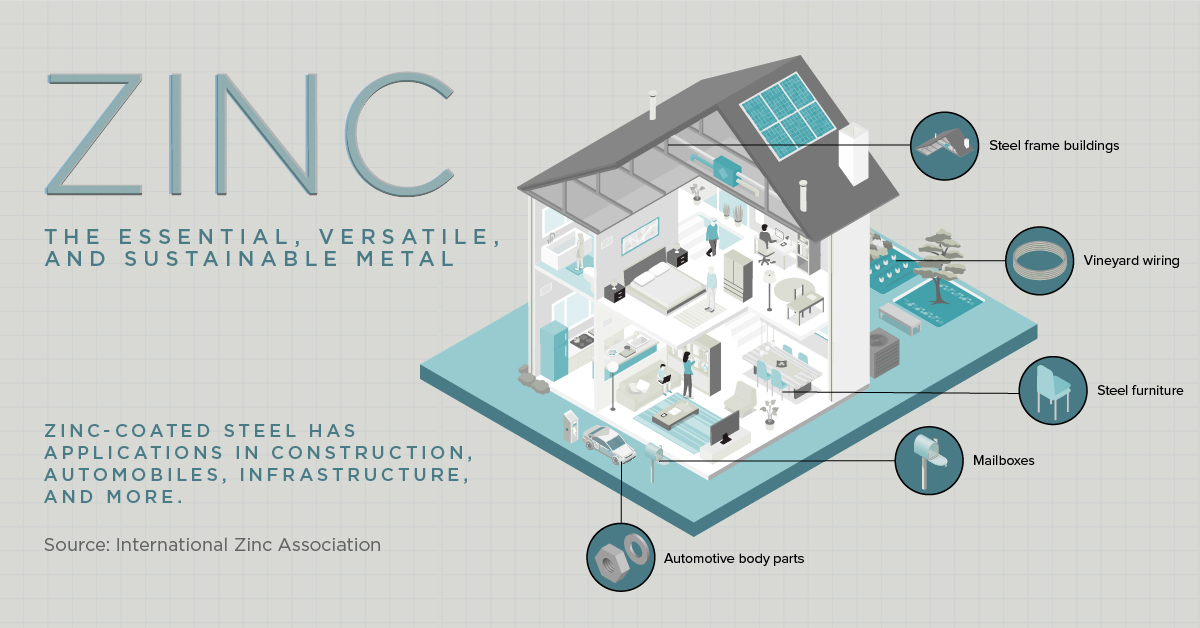Zinc: The Essential, Sustainable, and Versatile Metal
The following content is sponsored by Trilogy Metals.
What would the world be like without zinc?
Long-running TV show The Simpsons showed us one depiction what this could look like—but in order to truly gauge the impact of the metal on our lives, we need a better understanding of the uses of zinc and its role in modern life.
Zinc’s Role in Modern Life
Zinc is a naturally occurring mineral that is present all around us: from our bodies, foods, and medicines to the buildings we live and work in. Despite this, very few people actually know how it gets there.
This infographic comes to us from Trilogy Metals and looks at the widespread uses of zinc in the modern economy, from construction and infrastructure to health, farming, and green energy.

The Zinc Supply Chain
Zinc is the fourth most used metal in the world behind iron, aluminum, and copper.
Before zinc makes it into its various applications, miners have to extract the metal from the ground. So which countries are the top producers of zinc?
| Country | Mined Zinc Production (2019, metric tons) | Share of World Production (2019) |
|---|---|---|
| China | 4,300,000 | 33% |
| Peru | 1,400,000 | 11% |
| Australia | 1,300,000 | 10% |
| Total | 7,000,000 | 54% |
China, Peru, and Australia account for 7 million tons or 54% of the world’s zinc production. Although the U.S. is among the world’s top five zinc producers, it only produced 780,000 metric tons of the silvery metal in 2019—roughly one-fifth of China’s zinc production.
We don’t always use zinc in its raw, metallic form; it is often refined and processed first.
The United States is lagging in the production of refined zinc, with a net import reliance of 87%. As the demand for zinc rises, local sources of mined and refined zinc will be valuable for import-reliant countries like the U.S.
But where does the demand for zinc come from, and what makes it so valuable?
Zinc Strengthens: Infrastructure and Alloys
Zinc is also referred to as the “galvanizing metal” for its role in protecting steel. In fact, galvanizing accounts for around 50% of total annual zinc usage.
Galvanizing with zinc improves steel in various ways:
- Strength
Adding zinc as a protective layer provides steel with higher impact strength - Longevity
The zinc coating on galvanized steel lasts around 50 years, allowing structures made from steel to last longer - Corrosion-resistance
Zinc acts as a sacrificial coating for the underlying steel, protecting it from corrosion and rust
From steel-frame buildings and bridges to furniture and automotive body parts, galvanized steel plays a critical role in building sustainable infrastructure.
According to a study by the National Association of Corrosion Engineers, corrosion costs the world $2.5 trillion annually. Given that only 6% of all steel produced annually is galvanized, increasing the use of zinc-coated steel could potentially reduce this economic impact.
Zinc in Alloys
Besides galvanizing, alloying is one of the most common uses of zinc. Zinc’s ability to provide other metals with strength and corrosion-resistance makes it an effective alloying material.
Around 25% of all zinc is used in alloys to create metals such as brass, which are commonly found in household fixtures, plumbing fittings, electronic devices, and musical instruments. Additionally, zinc alloys have a range of engineering applications, thanks to their rigidity, strength, and conductivity.
Zinc Improves: Health and Productivity
Zinc is not only a natural part of our body but also a critical nutrient for our immune systems.
The UN has labeled zinc a “life-saving commodity”—increased access to zinc could prevent 200,000 childhood deaths annually. Zinc is an essential nutrient for various reasons:
- Helps fight infections
- Vital for taste and smell
- Enhances memory and thinking
Furthermore, zinc oxide, a compound produced by oxidizing metallic zinc, is a key ingredient in various health and medicinal products including cosmetics, food additives, and anti-fungal creams.
Zinc in Crops
Besides its critical role in the human body, zinc is also an essential micronutrient for plants.
When farmers add zinc to soils in the form of zinc oxide, it helps their crops resist tough conditions such as drought, salinity, and heat. A stable supply of zinc can also help crops reach higher productivity and yield levels.
As the global population grows, crop productivity will be important in addressing the higher demand for food. Zinc has an essential role to play in making crops resilient and more productive.
Zinc Supports: The Clean Energy Transition
The transition to a low-carbon, clean energy future will be mineral intensive—and zinc is playing a key role in boosting this transition.
Zinc-air batteries are quickly emerging as an efficient clean energy-storage solution that can provide renewable electricity in remote regions. Three factors make zinc-air batteries an integral part of the clean energy transition:
- Efficient for storing non-constant renewable energy
- Affordable because of their use of zinc
- High energy density
In fact, NantEnergy’s zinc-air energy storage systems have already made a significant impact on sustainability.
- Avoided 50,000 tons of CO2 emissions
- Reduced 4 million liters of diesel fuel use
- Provided 200,000 people with access to power
Additionally, zinc protects the steel used to build renewable energy infrastructure. Offshore wind masts are made from zinc thermal sprayed steel to prevent corrosion, and solar PV panels use support structures made of galvanized steel.
Zinc in the Circular Economy
Zinc is part of a circular economy that restores, recovers, and reuses.
For starters, zinc is fully recyclable—it can be recycled from scrap without losing any of its properties. As a matter of fact, 60% of all produced zinc is still in use. Moreover, zinc’s 45% end-of-life recycling rate means that almost half of all the zinc produced is recycled after final-usage.
Zinc’s contribution to the circular economy will help minimize waste and improve resource sustainability as our material needs grow.
Zinc: Strengthening the Path to a Sustainable Future
The uses of zinc today are widespread and make an enormous impact on almost every aspect of our modern lives. Just as our present world could not function without zinc, so will our future.
As we transition to a cleaner world, zinc will continue strengthening, improving, and supporting the modern economy.
-

 Sponsored3 years ago
Sponsored3 years agoMore Than Precious: Silver’s Role in the New Energy Era (Part 3 of 3)
Long known as a precious metal, silver in solar and EV technologies will redefine its role and importance to a greener economy.
-

 Sponsored7 years ago
Sponsored7 years agoThe History and Evolution of the Video Games Market
Everything from Pong to the rise of mobile gaming and AR/VR. Learn about the $100 billion video games market in this giant infographic.
-

 Sponsored8 years ago
Sponsored8 years agoThe Extraordinary Raw Materials in an iPhone 6s
Over 700 million iPhones have now been sold, but the iPhone would not exist if it were not for the raw materials that make the technology...
-

 Sponsored8 years ago
Sponsored8 years agoThe Industrial Internet, and How It’s Revolutionizing Mining
The convergence of the global industrial sector with big data and the internet of things, or the Industrial Internet, will revolutionize how mining works.


